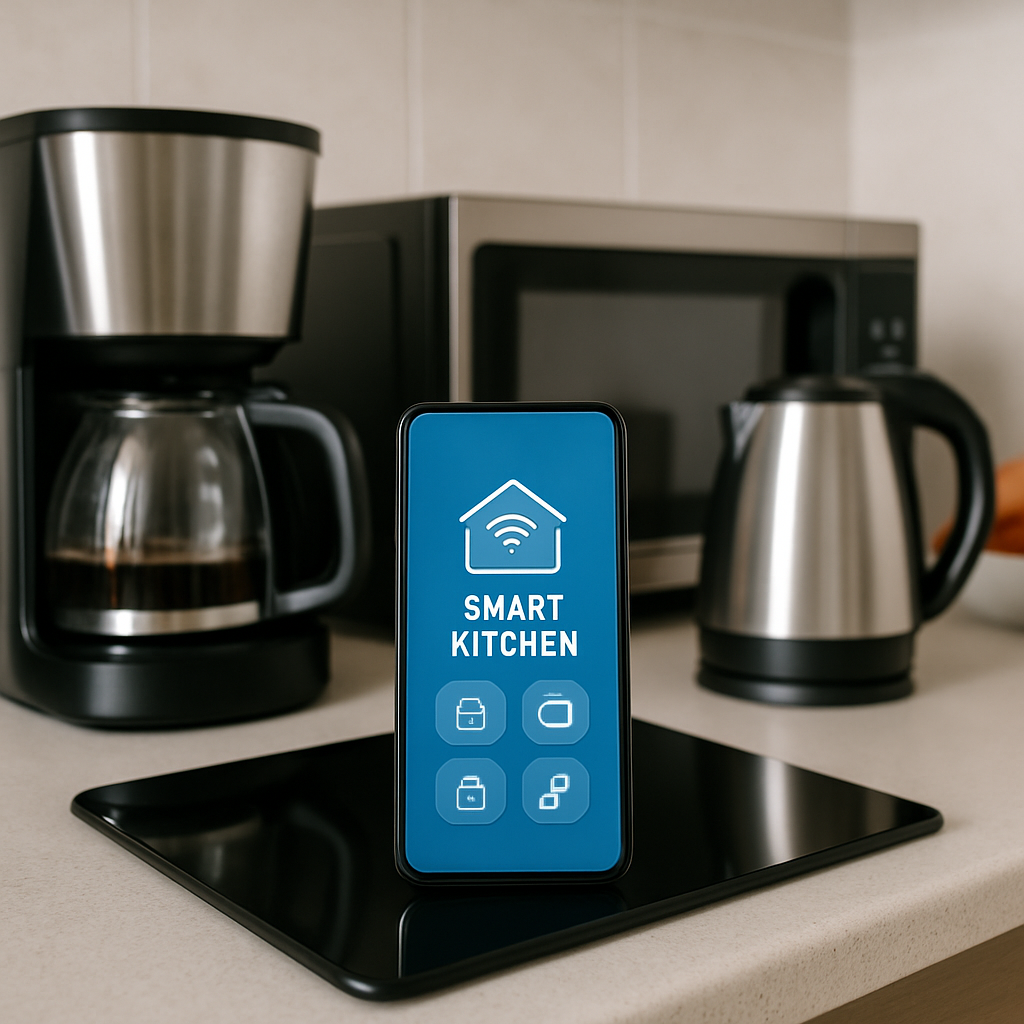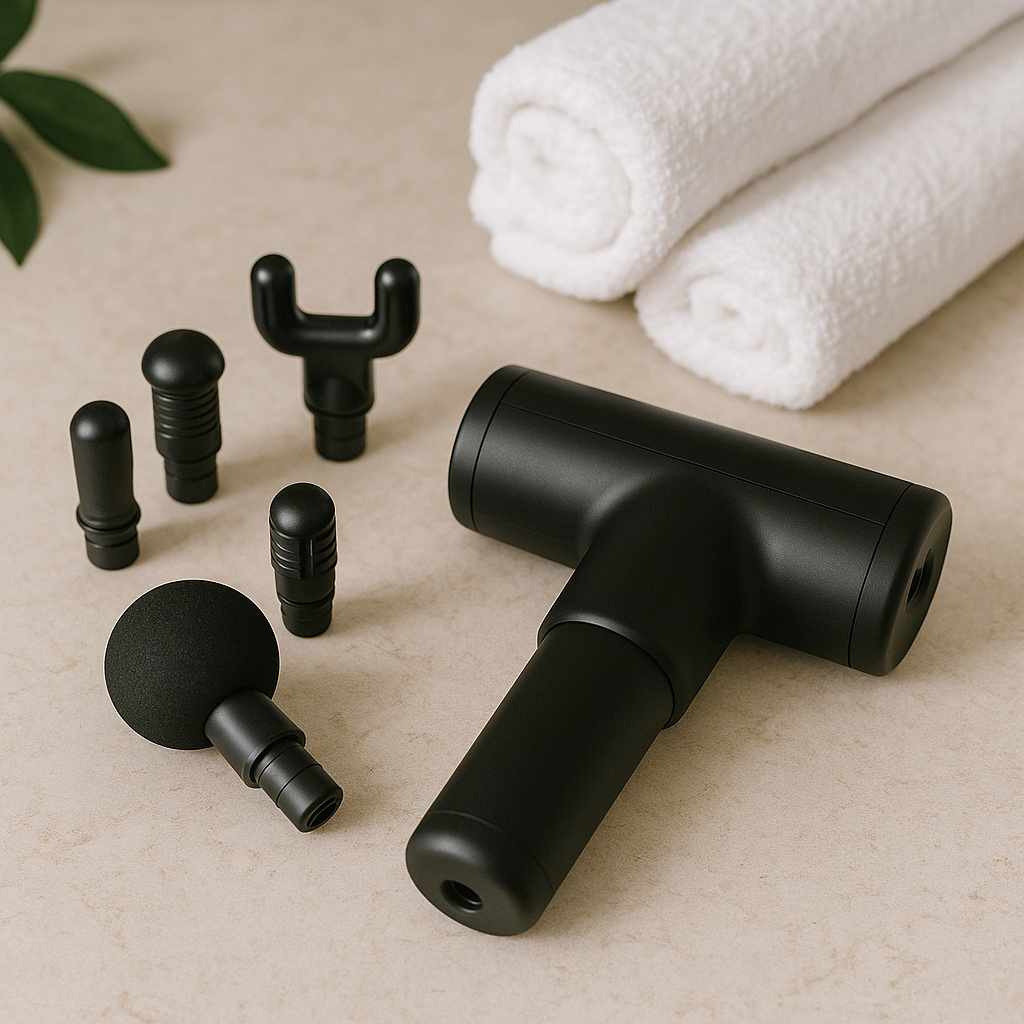In the evolving landscape of 2025, smart kitchen appliances are revolutionizing home cooking with cutting-edge technology, energy-efficient designs, and eco-friendly gadgets. From portable blenders perfect for smoothies to multifunctional ovens with app control and voice integration, these trends focus on convenience, sustainability, and seamless smart home integration. Whether you're upgrading your kitchen appliances for better wellness or seeking affordable kitchen gadgets that save time, this guide explores the top smart kitchen appliances trends of 2025. We'll highlight innovations like AI-driven features, voice control compatible with systems like Alexa and Google Home, and sustainable designs that reduce energy use and waste.
Smart kitchen appliances in 2025 emphasize connectivity, allowing remote monitoring via apps, automated cooking, and personalized settings. With rising demand for eco-friendly gadgets, trends lean toward materials that are recyclable and energy-efficient, promoting a greener lifestyle. Portable gadgets like blenders for smoothies and compact fans are gaining popularity for their versatility in small spaces or on-the-go use.
How to Choose Smart Kitchen Appliances in 2025
Navigating the array of smart kitchen appliances requires focusing on your needs, space, and budget. Here's a detailed guide to help you select the best options.
Key Types of Smart Kitchen Appliances
- Multifunctional Ovens: These all-in-one units combine baking, air frying, and steaming with AI for precise cooking.
- Smart Refrigerators: Feature touchscreens, inventory tracking, and integration with shopping apps for reduced food waste.
- Induction Cooktops: Offer fast, energy-efficient heating with smart sensors for safety and precision.
- Portable Blenders: Compact, USB-rechargeable devices ideal for smoothies and travel, blending convenience with portability.
- Voice-Controlled Devices: Appliances that respond to commands, enhancing hands-free operation in busy kitchens.
- Eco-Friendly Dishwashers: Use less water and energy, with AI optimizing cycles based on load.
- Connected Coffee Makers: Brew on schedule via app, with customizable strength and temperature.
Essential Features to Consider
- AI and Connectivity: Look for appliances with app control for remote operation, recipe suggestions, and integration with smart home systems like Alexa or Google Home.
- Energy Efficiency: Opt for models with low power consumption and sustainable materials to lower utility bills and environmental impact.
- Sustainability: Eco-friendly gadgets made from recycled plastics or with waste-reducing features, like smart composters.
- Voice and Touch Controls: Hands-free operation for safety and ease, especially in multifunctional setups.
- Customization: Personalizable hardware, colors, and functions to match your kitchen decor and lifestyle.
- Portability and Size: For small kitchens, choose compact, affordable kitchen gadgets like portable blenders or fans.
- Price Range: Budget options start at $50 for basic smart devices, while premium multifunctional appliances can exceed $500, often with warranties for longevity.
Prioritize wellness by selecting non-toxic, BPA-free materials in appliances like humidifiers or diffusers that double as kitchen aids. For families, focus on safety features like auto shut-off in cooktops.
Top 8 Smart Kitchen Appliances Trends of 2025
Drawing from industry insights, here are the leading trends shaping smart kitchen appliances this year. Each emphasizes innovation, efficiency, and user-centric design.
1. AI-Driven Multifunctional Ovens – Leading the Pack
These ovens integrate air frying, steaming, and baking with AI that learns your preferences for automated cooking. Enhanced connectivity allows app-based recipe guidance and remote preheating.
Pros: Saves space and time, energy-efficient with precise temperature control.
Cons: Higher initial cost.
Ideal for busy households seeking smart home essentials.
2. Sustainable and Eco-Friendly Designs – Green Revolution
Appliances using recycled materials and low-energy tech are booming, including dishwashers that minimize water use and refrigerators with food waste trackers.
Pros: Reduces environmental footprint, often with rebates for energy savings.
Cons: May require compatible smart home setups.
Perfect for eco-conscious users prioritizing sustainable design.
3. Voice Control Integration – Hands-Free Convenience
Trends show a surge in appliances responsive to voice commands, from cooktops adjusting heat to blenders starting smoothies via Alexa or Google Home.
Pros: Enhances accessibility, integrates with existing smart home gadgets.
Cons: Privacy concerns with always-listening features.
Great for multitasking in modern kitchens.
4. Portable and Compact Gadgets – On-the-Go Innovation
Portable blenders and fans are trending for their USB-rechargeable batteries and compact size, making them affordable kitchen gadgets for travel or small spaces.
Pros: Versatile for smoothies or quick meals, energy-efficient.
Cons: Limited capacity compared to full-size models.
Suited for wellness-focused lifestyles.
5. Smart Solutions for Food Waste Reduction – Intelligent Efficiency
Appliances with AI sensors detect spoilage, suggest recipes, or vacuum-seal leftovers, minimizing waste in refrigerators and composters.
Pros: Saves money, promotes sustainability.
Cons: Requires app setup for full functionality.
Essential for eco-friendly kitchens.
6. Induction and Dual-Fuel Cooking Surfaces – Precision Heating
Fast-heating induction cooktops with smart sensors and dual-fuel options for gas-electric hybrids are popular for their energy efficiency and safety.
Pros: Quick boil times, easy cleaning.
Cons: Needs compatible cookware.
Ideal for professional-level home cooking.
7. Colorful and Personalized Finishes – Aesthetic Appeal
Beyond stainless steel, trends include green, natural, or custom colors for appliances, blending with kitchen decor for a personalized touch.
Pros: Enhances visual appeal, flexible for any style.
Cons: Custom options may cost more.
Perfect for design-savvy homeowners.
8. Integrated and Built-In Appliances – Seamless Kitchens
Open layouts favor built-in microwaves, drawers, and islands with embedded cooktops, creating a streamlined, smart home automation experience.
Pros: Maximizes space, modern look.
Cons: Installation complexity.
Trending for contemporary home renovations.
Maintenance and Tips for Smart Kitchen Appliances
To extend lifespan: Regularly update apps for new features, clean sensors to maintain accuracy, and use energy-efficient modes. For portable blenders, charge via USB and avoid overfilling. Pair with smart home hubs for unified control.
FAQ: Common Questions About Smart Kitchen Appliances Trends 2025
- What are the most energy-efficient smart kitchen appliances? Induction cooktops and AI ovens top the list for low consumption.
- How do voice control features work? They integrate with Alexa or Google Home for commands like "start blender for smoothies."
- Are eco-friendly gadgets worth it? Yes, they reduce bills and support sustainable design.
- What's new in portable kitchen gadgets? USB-rechargeable blenders and fans for on-the-go use.
- Can smart appliances reduce food waste? Absolutely, with AI tracking and suggestions.
Conclusion: Embrace the Future of Smart Kitchens in 2025
The top smart kitchen appliances trends of 2025 blend technology, sustainability, and convenience for an elevated cooking experience. From eco-friendly gadgets to app-controlled portable blenders, invest in these innovations for a smarter, greener home. Stay ahead with energy-efficient designs and voice control—your kitchen transformation awaits.







Leave a comment
This site is protected by hCaptcha and the hCaptcha Privacy Policy and Terms of Service apply.